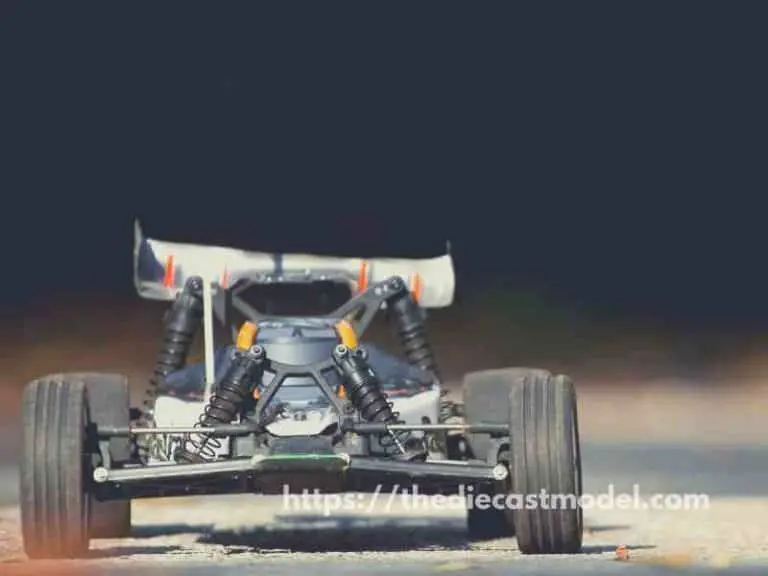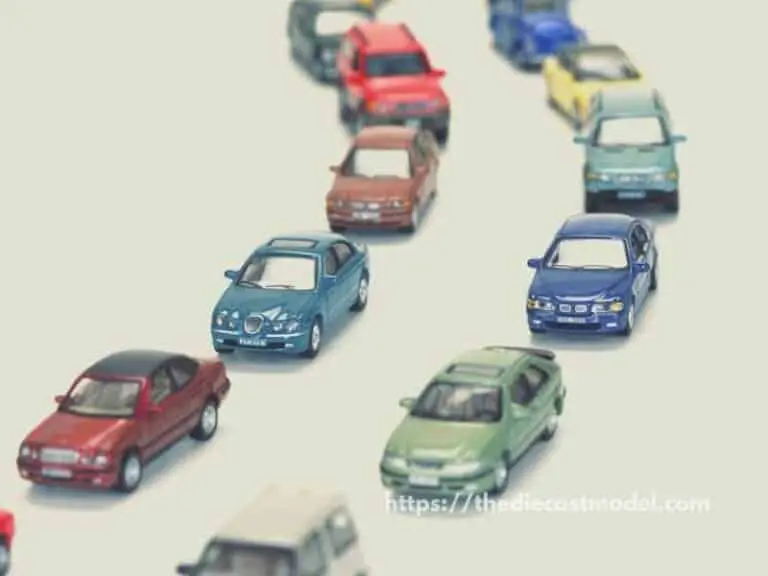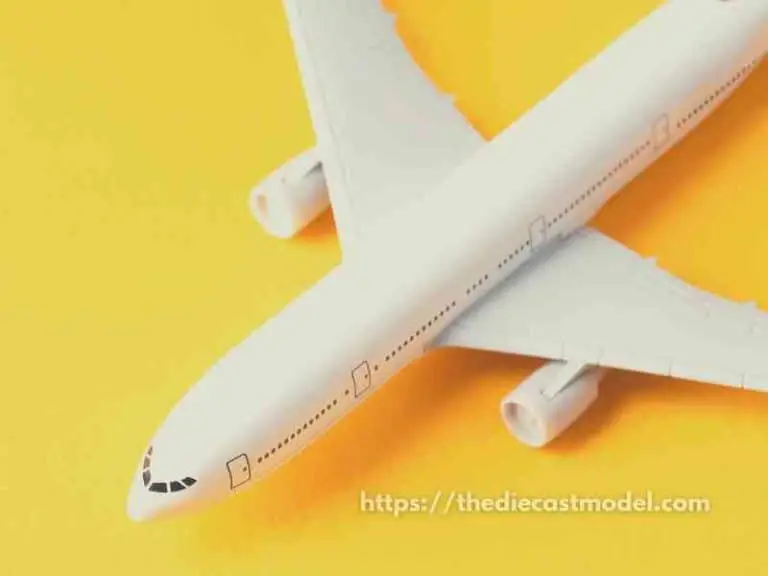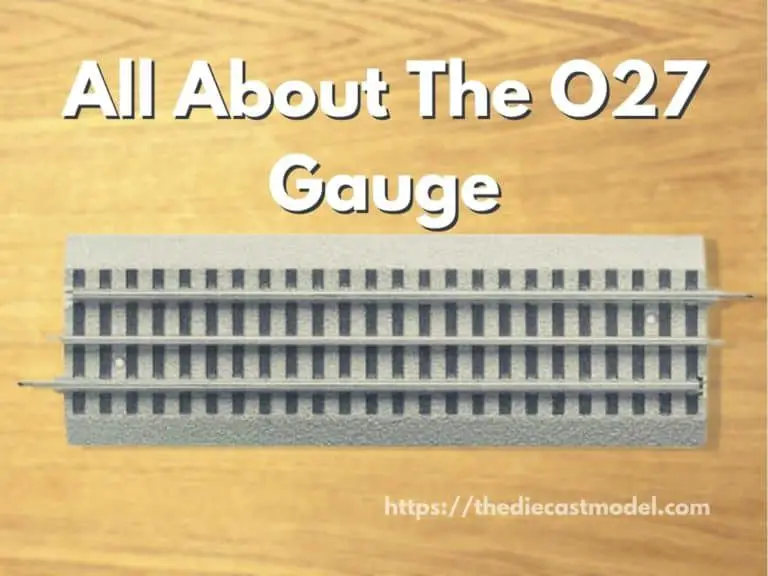Can a Model Train Go Uphill? How Steep Can Model Trains Climb?
Generally speaking, a model train can go uphill as high as 6% grade, as long as the locomotive can still carry the cars without risks of stopping or derailments. However, this isn’t realistic as real trains don’t usually go higher than 2%. Thus, most serious train modelers agree not to make steep grades higher than 3%.
What do I mean by % grade? How steep can model and actual trains climb, and why don’t they usually reach high grades compared to other vehicles such as cars? We will discuss these questions in this post.

How are Inclines Measured in Trains?
Inclines or steepness in trains is measured either by “% grade” or “distance in distance,” depending on the location.
In the USA, people use the % grade where the grade is how much the level changed every 100 feet, while people use level increase over distance in the UK.
For example, an increase of 1 foot over a 100 feet track is called 1% grade in the US and 1 foot in 100 feet in the UK.
Thus, when I say that most model trains don’t go higher than 2%, this means that the train tracks don’t usually go higher than 2 feet for every 100 feet of tracks.
In the UK, a 2% grade is equivalent to “1 in 50 feet.”
Basically speaking, the higher the % grade, the steeper the train tracks are.
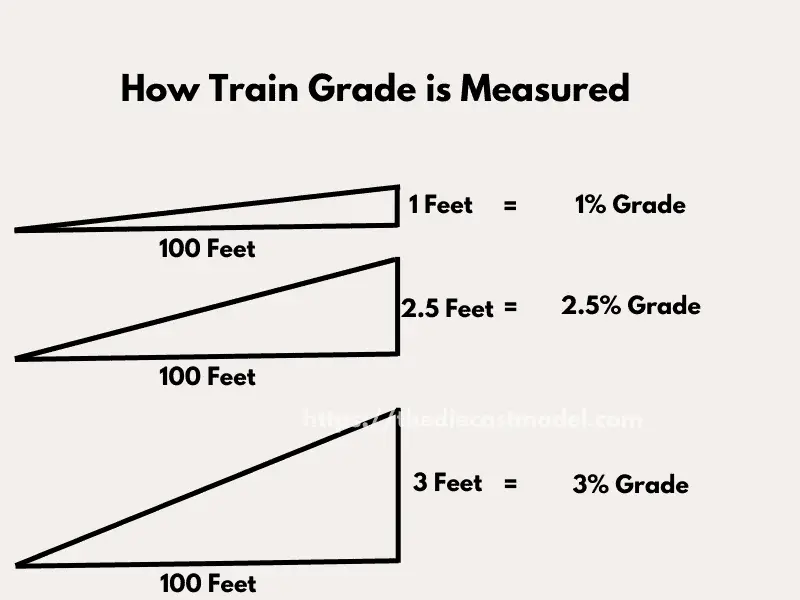
To find more information about train grades, feel free to check this post: What is % grade in model railroading?
But why am I explaining grades when this post is about steepness. Basically, since we use % grade in defining steepness on trains, I need to introduce the concept before going further.
Right now, we can start discussing how steep trains can climb.
How steep can a model train climb?
As a general rule, the steepest grade a model train can climb is about 6%. Most model trains can still carry their load without stopping and derailment at this grade. However, this steepness removes realism since actual trains don’t go higher than 2%. Thus, train modelers generally agree not to go higher than 3%.
Model railroading is a game of fun and simulation.
Basically, do whatever you want on your layout. You can put as many trees, mountains, buildings, curves, and steepness on your tracks.
If you want to make a very steep train track, you are free to do so. In fact, it is easy to make a 6% grade track on model train layouts.
However, some modelers prefer realism and wouldn’t do 6% inclines on their layout.
In fact, most modelers would call anything higher than 2% as model train grade since they aren’t common in real life.
But the direct answer is you can make your layout as steep as you want as long as the train motor and wheels can handle it, which means the train wouldn’t stop midway through the incline, and there is no risk of derailment.
But why are high grades unrealistic? Well, real trains don’t usually go for high grades.
In actual trains, a 1.5% grade is already considered very steep.
To make it simple, here is a summary of % the grades on trains and how steep they are considered.
| % Grade | Steepness |
| 0.8% to 1% | Light Grade |
| 1% to 1.8% | Heavy Grade |
| > 1.8% | Mountain Grade |
If you check the table above, 1% to 1.8% is already considered a heavy grade, which means they are very steep for trains.
Anything higher than 1.8% is already considered mountain grade.
In fact, a 2% grade would usually require trains to have an additional power source or motor to move.
To give more perspective, the steepest train track in the UK is in Worcestershire called the Lickey Incline, which is about 2.65%.
Remember that it’s already the steepest train track in the UK.
The steepest train track in the world is the Madison Incline found in the USA. This track has a 5.89% grade.
As you can see, the steepest in the whole world is 5.89%, while in the UK, the steepest is 2.65%.
That’s why most modelers who prefer realism on their build wouldn’t use anything higher than 3%.
While you are free to make your layout as steep as you want, it is not recommended to go higher than 3% if you want your layout to be realistic.
Thus, it depends on your preference. If you want to add some fun and make steep tracks, you can go as high as you want, provided that your train motor won’t stop midway.
If you want some realism, don’t go higher than 3%.
Recommended Read: If you need a guide on measuring train grades in model trains, such as the HO, N, and OO scale, please check this post; What is % grade in model railroading?
However, why can’t model trains reach high grades? Why don’t people make trains that can run on, let’s say, 30% grade? Well, let’s talk about that limitation in the next section.
Why can’t model trains reach high incline grades?
Trains can’t reach high incline grades because of friction. Trains are designed to run on less power and more speed while carrying heavy loads. This means lesser friction on their wheels which are only comprised of steel. Because of this, trains would easily slide on steep surfaces.
You might already wonder since while trains don’t go higher than 2%, other vehicles such as cars can easily climb as steep as 30% grade.
Why is this the case? Well, it boils down to the train’s design.
Trains are designed to carry heavy loads at high speeds while using less energy. This means they are engineered to run on less friction on tires.
Unlike cars that use rubber tires, they run on steel wheels, which means their wheels don’t usually stick well on tracks.
This is also why derailment is common on trains.
Lesser friction allowed trains to run fast even if they carried a huge load. Furthermore, heavy load adds only a little friction on the tires since they aren’t made with rubber.
Basically, trains are designed to run optimally on leveled tracks. Steepness can cause them to slide, and their only way to counter gravity is to increase the power output.
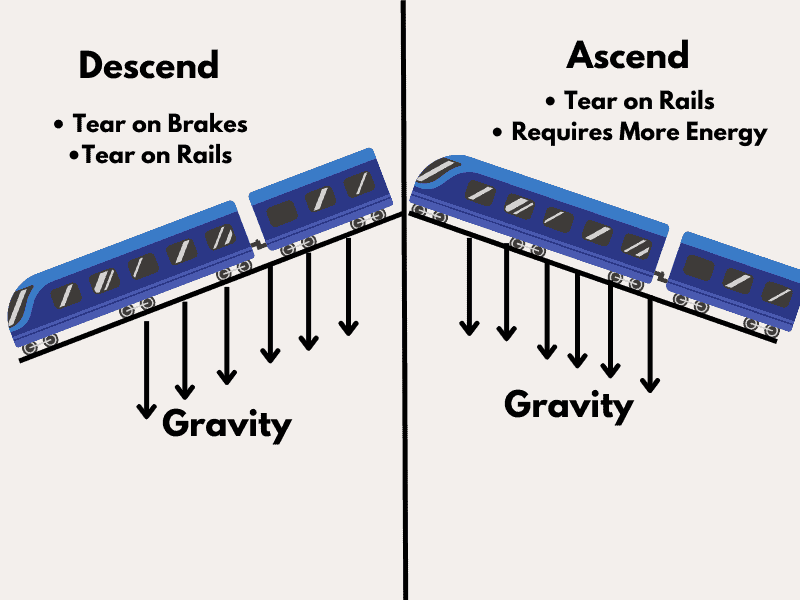
Here is a simple illustration of what I mean.
Since trains have less friction, they are more prone to the effects of gravity. That’s why the train might go backward if it can’t handle gravity due to its design.
On the other hand, cars have rubber wheels, which allow them to carry things even on steep roads. However, they aren’t as efficient as trains when transferring goods on a flat surface.
Basically, trains are designed to run efficiently on flat surfaces but not on steep tracks.
The opposite is true for cars that run efficiently on steep roads while inefficient on a flat surface.
What’s next? Now that you know how steep your model trains can run how about learning how big you can make your layout? Especially how long could your tracks be before adding wiring or power source? Well, let’s discuss that here: How Long can Model Train Tracks be?


